Lemon Poppy Seed Cake
This post may contain affiliate links. Read my full disclosure policy.
This lemon poppy seed cake is laced with fresh lemon zest, filled to the brim with nutty, crackly poppy seeds, and drizzled with a bright lemon glaze. It’s the perfect “company cake.”
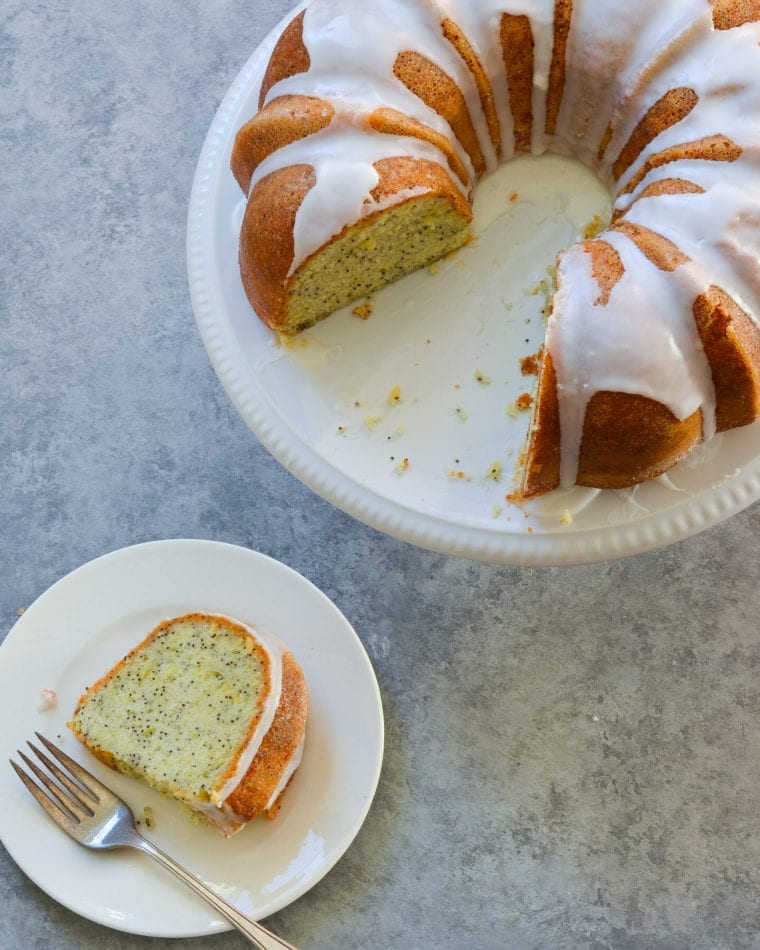
A variation of my lemon pound cake, this lemon poppy seed cake is laced with fresh lemon zest, filled to the brim with nutty, crackly poppy seeds, and drizzled with a bright lemon glaze. The texture is just what you hope for in a homemade cake — moist and melt-in-your-mouth tender — and the cake keeps well for days. My grandmother would have called it a “company cake” since it’s the perfect treat to have on hand when friends and family come over.
The cake can be made in a Bundt pan or two 8½ x 4½-inch loaf pans. Before deciding which pans to use, please see the important notes at the bottom of the recipe. The cake keeps well for days on the countertop and freezes well, too. If you love the lemon and poppy seed combo, don’t miss my lemon poppy seed muffins!
What you’ll need to Make Lemon Poppy Seed Cake
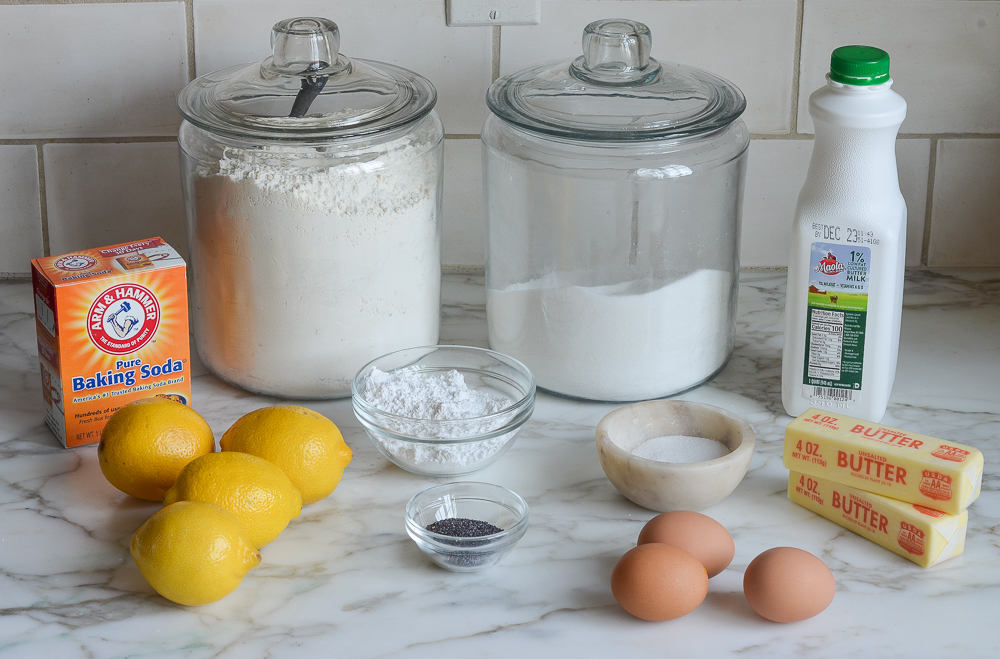
How to make lemon poppy seed cake
To begin: In a medium bowl, combine the flour, baking soda, salt, and poppy seeds.
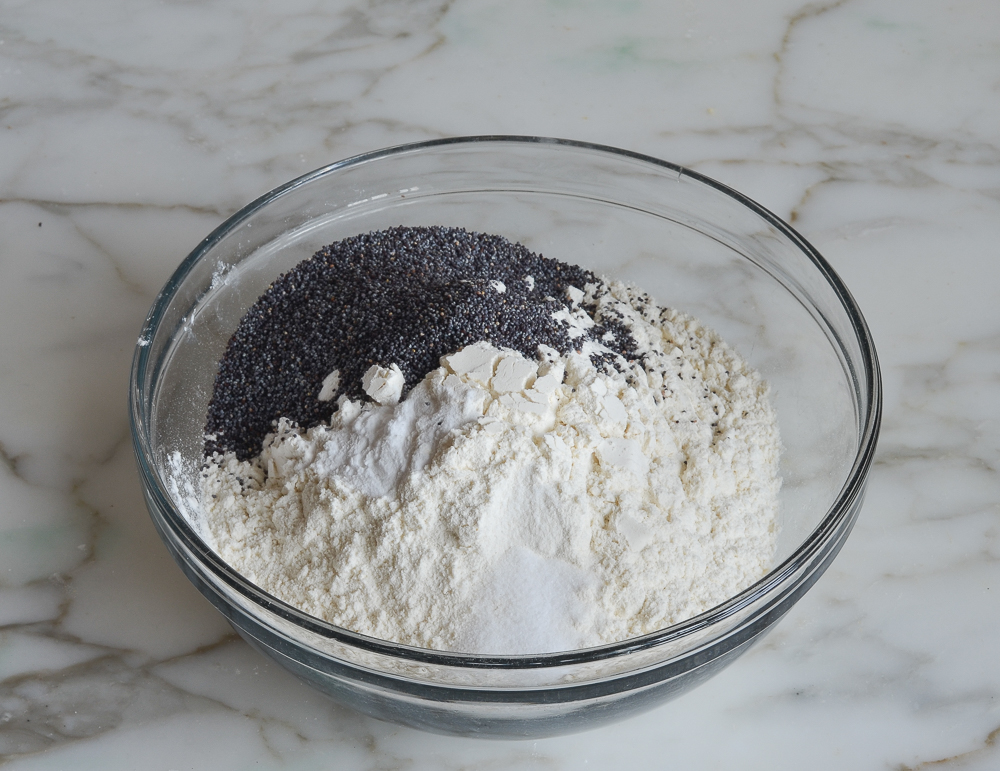
Whisk well and set aside.
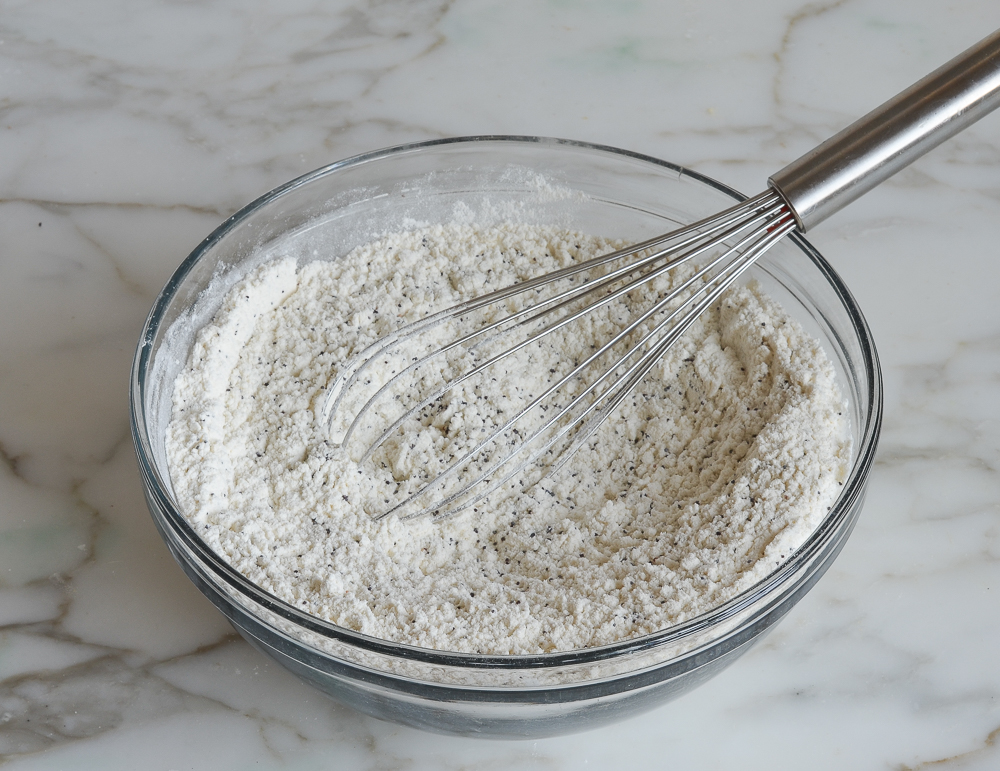
In a small bowl, combine the buttermilk, lemon zest and lemon juice.
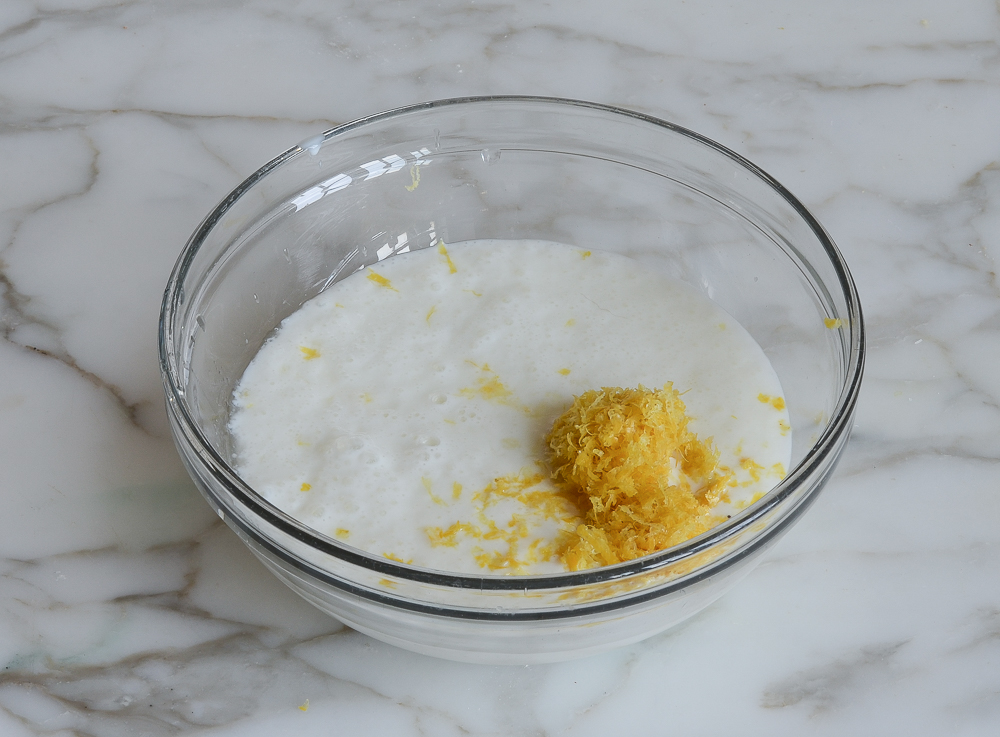
Whisk and set aside.
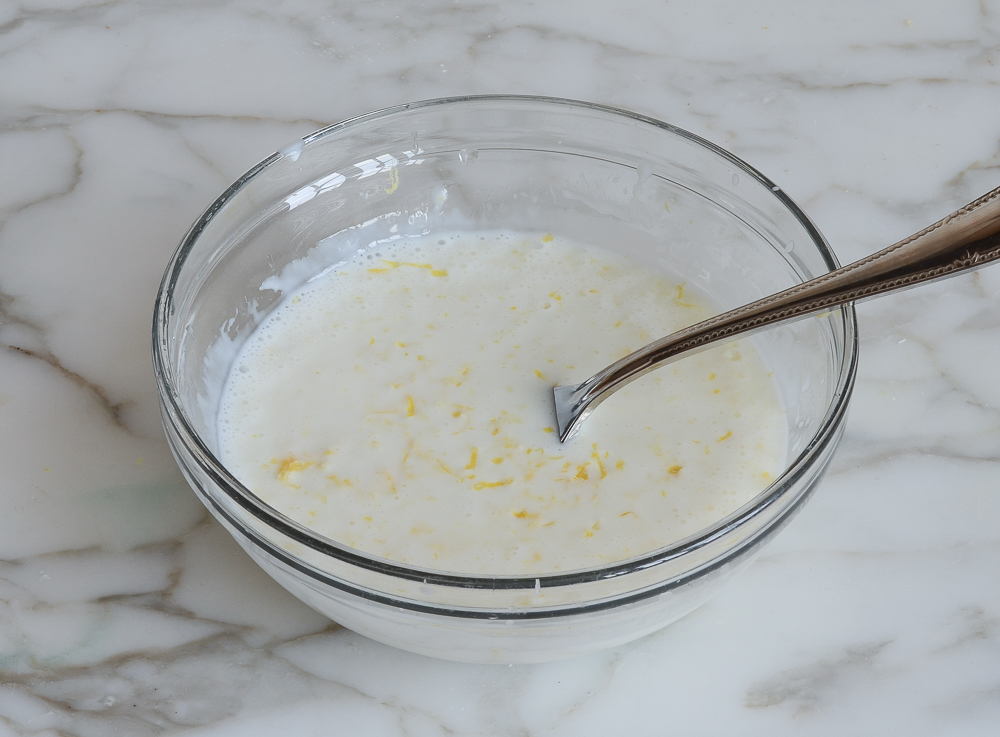
In the bowl of an electric mixer fitted with the paddle attachment (or beaters), combine the butter and sugar.
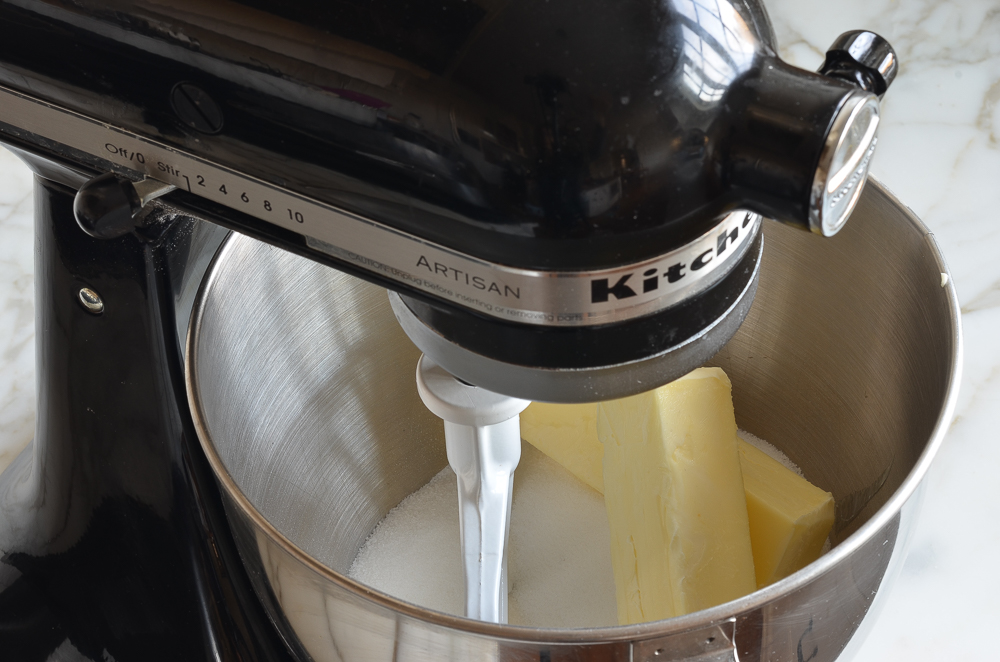
Cream on medium speed until light and fluffy, 3-4 minutes.
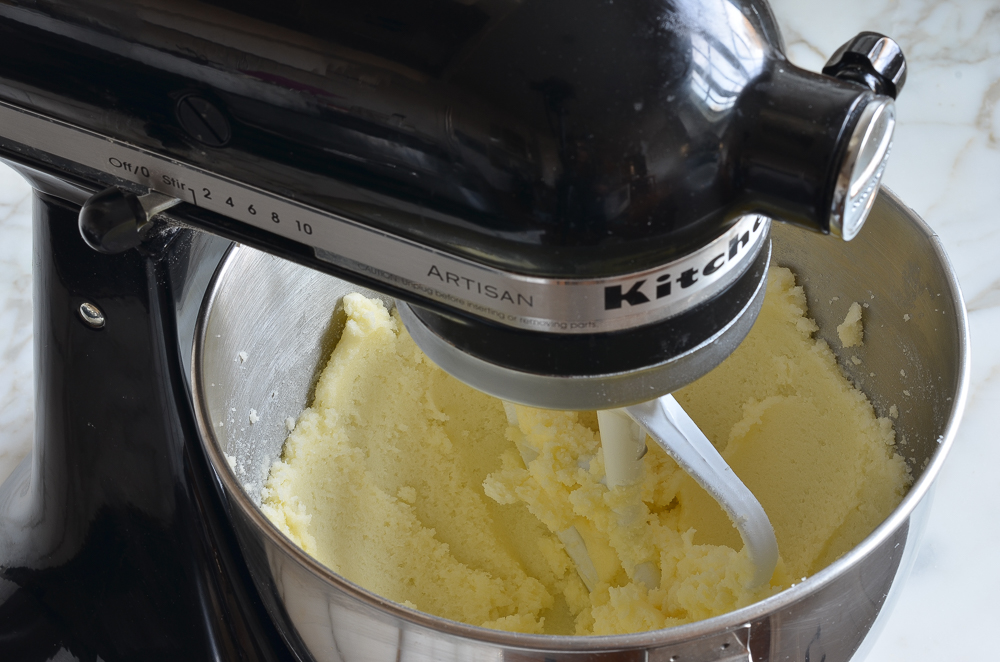
Scrape down the sides of the bowl, then beat in the eggs one at a time.
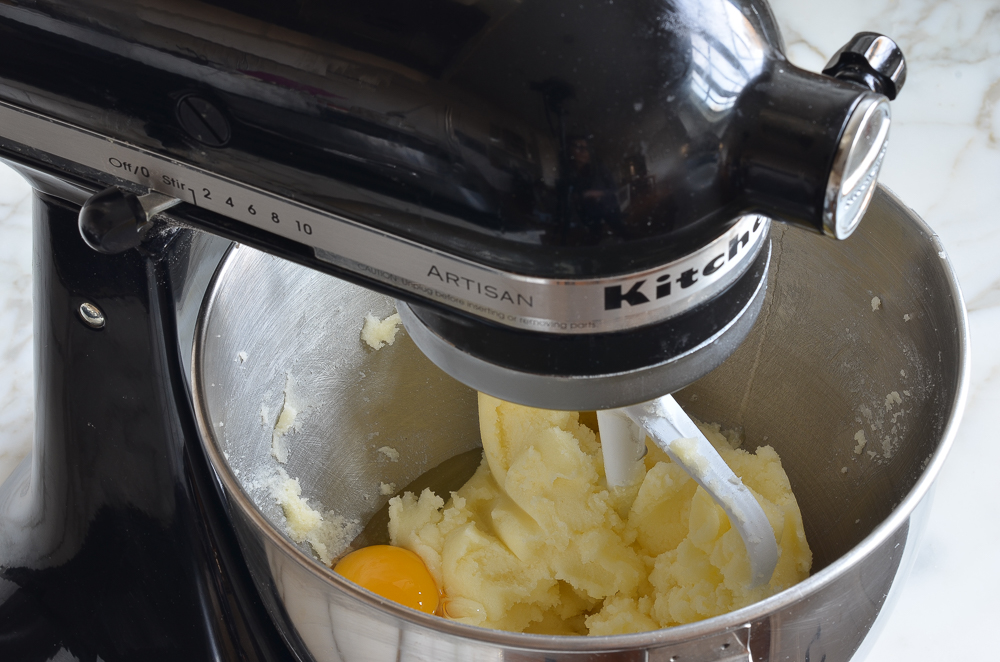
Beat well after each addition.
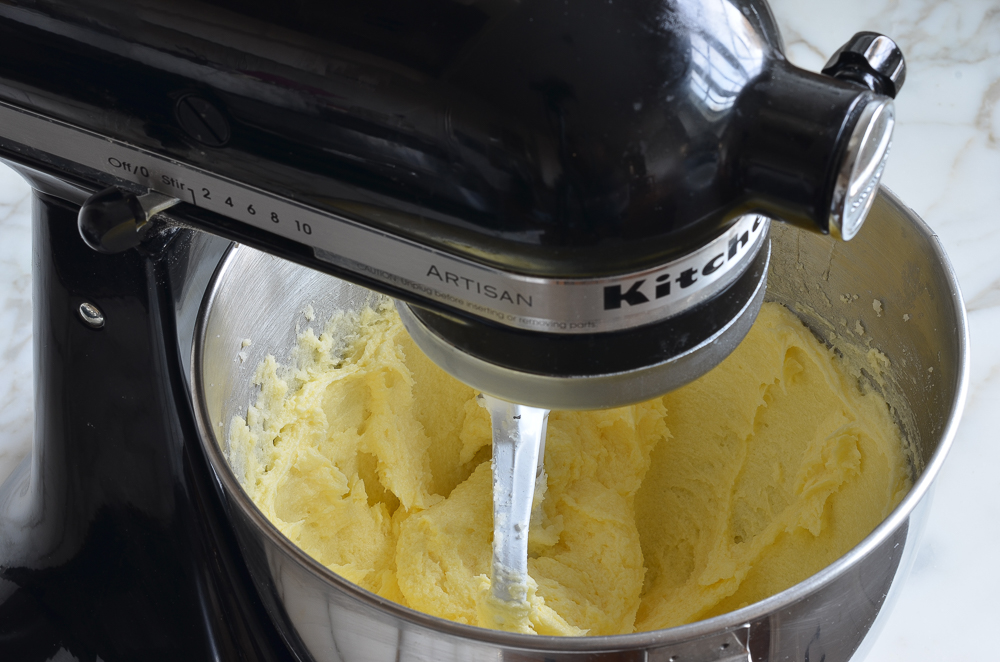
Scrape down the sides of the bowl again. With the mixer on low speed, beat in one-quarter of the flour mixture.
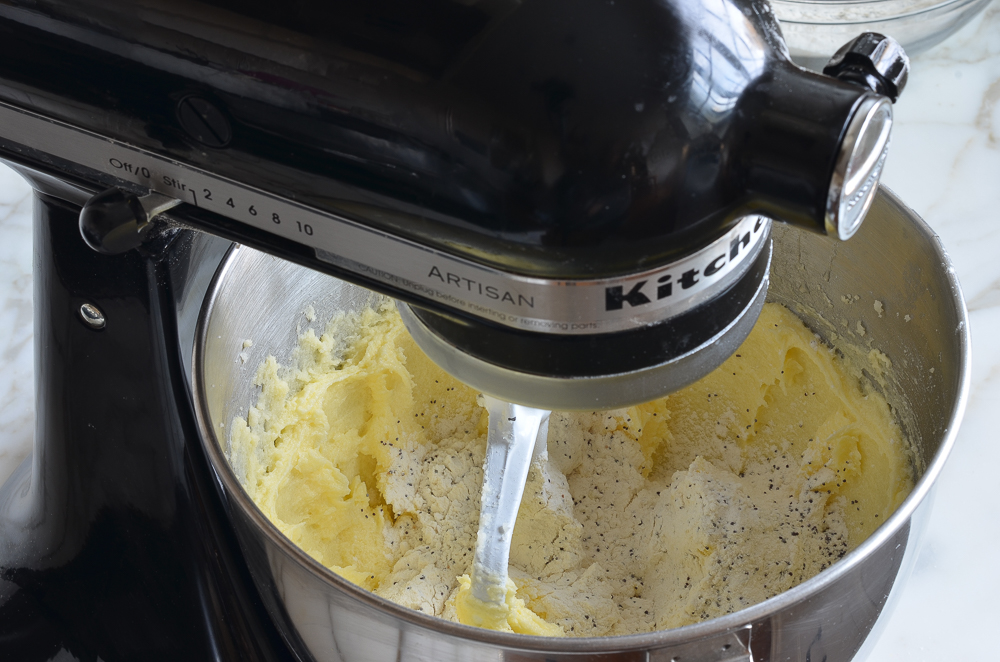
Add one-third of the buttermilk mixture.
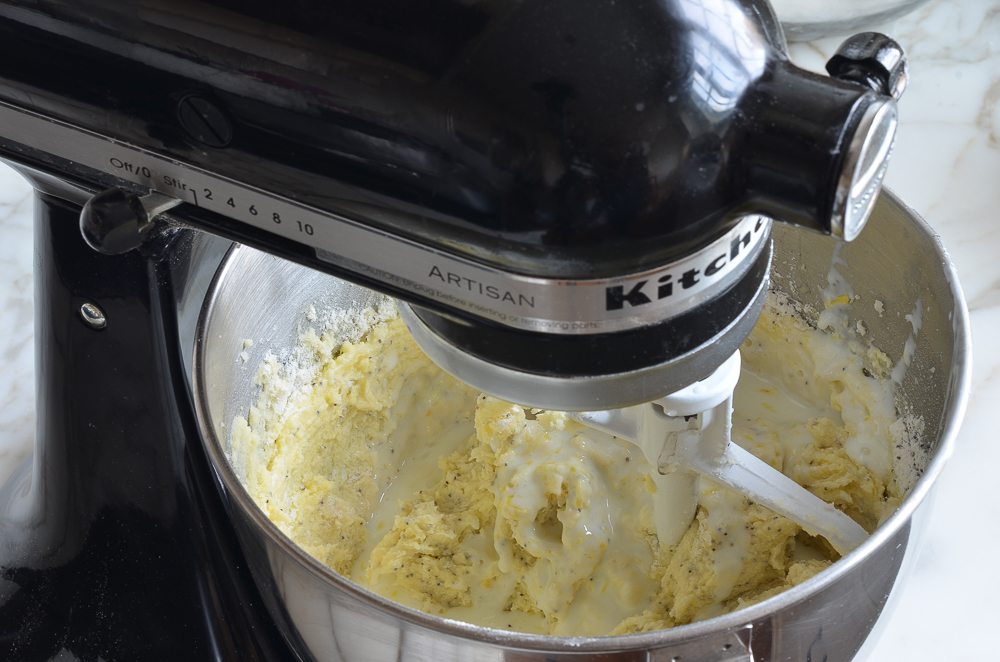
Beat in another quarter of the flour mixture, then another third of the milk mixture. Repeat with another quarter of the flour mixture and the remaining milk mixture. Finally, beat in the remaining flour mixture.
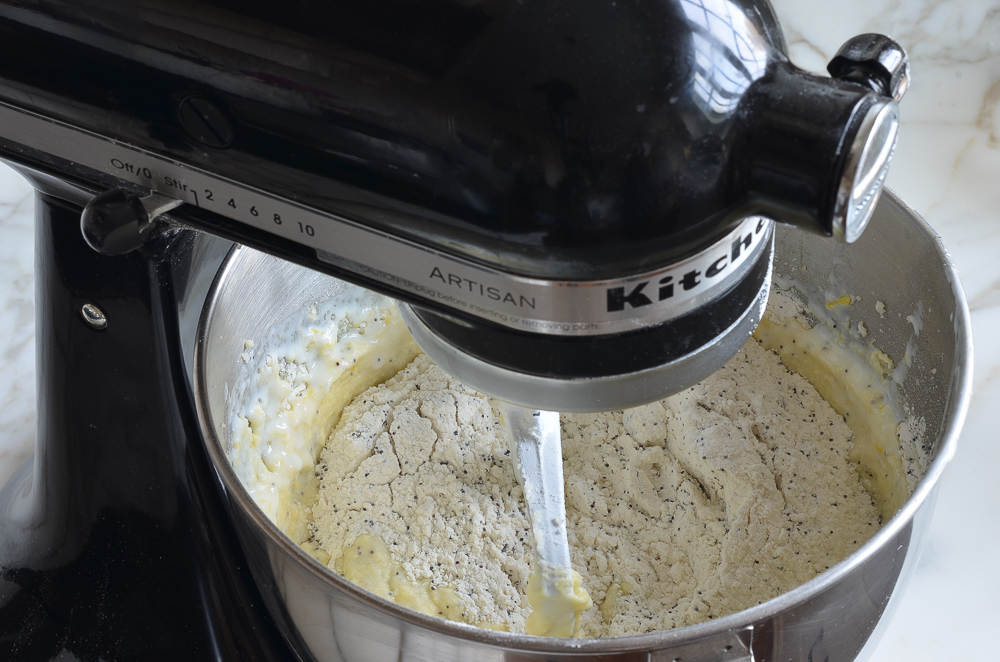
Scrape down the sides and bottom of the bowl, and give a quick mix to make sure all of the ingredients are well incorporated.
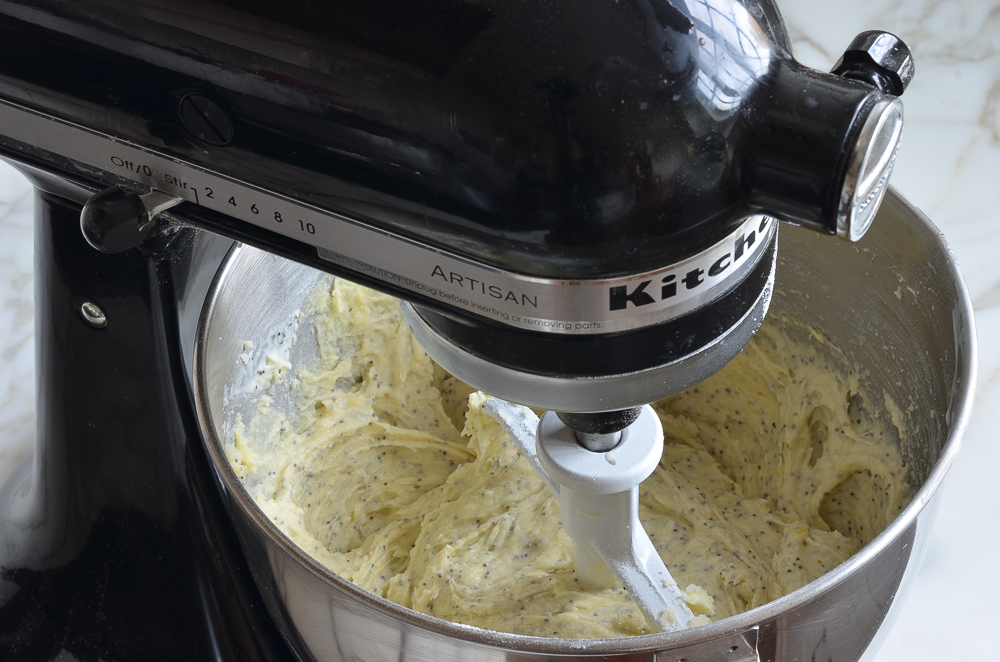
Spray the Bundt pan with nonstick cooking spray and coat with sugar. Make sure the entire pan is covered.
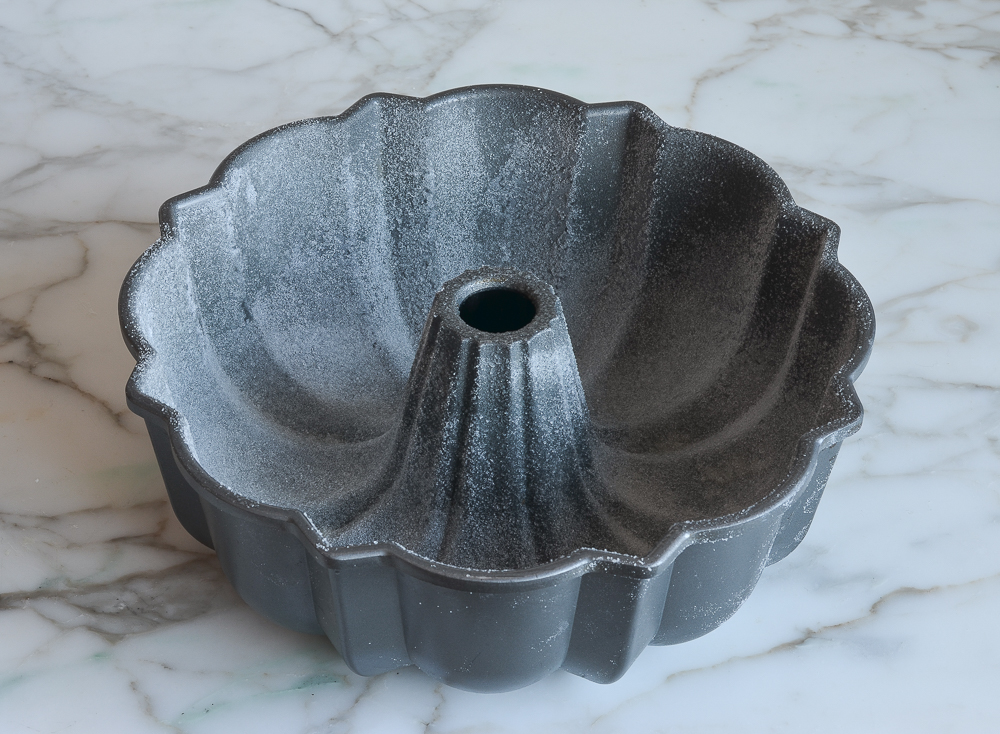
Spoon the thick batter into the prepared pan and smooth the top with a rubber spatula.
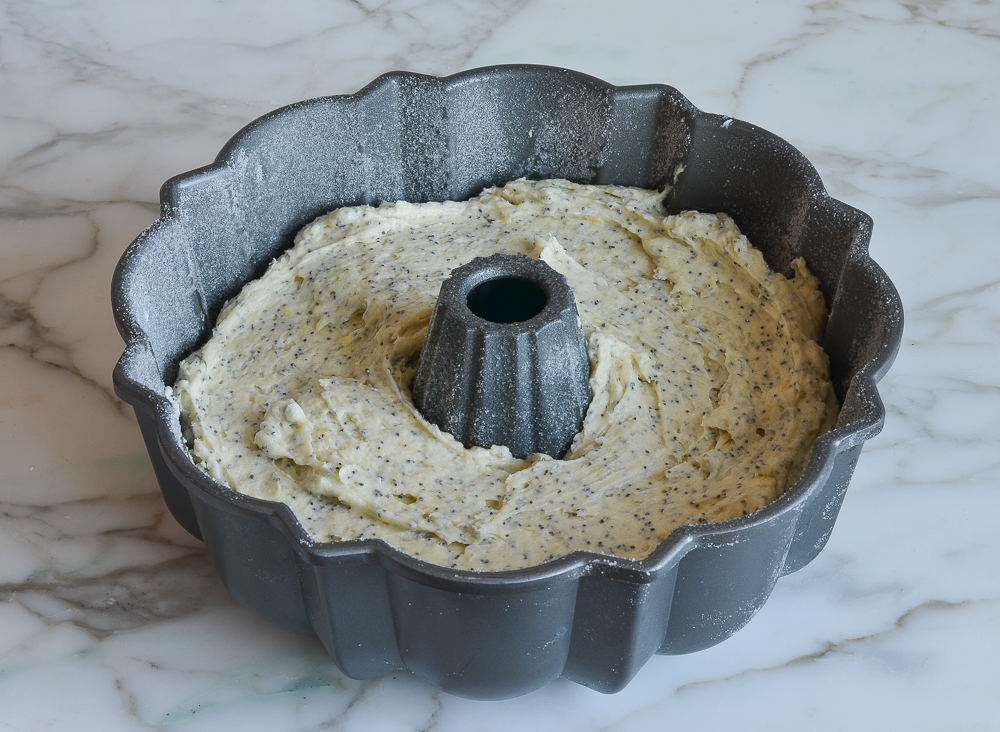
Bake for 65 to 75 minutes, or until the top of the cake is golden and a cake tester comes out clean. 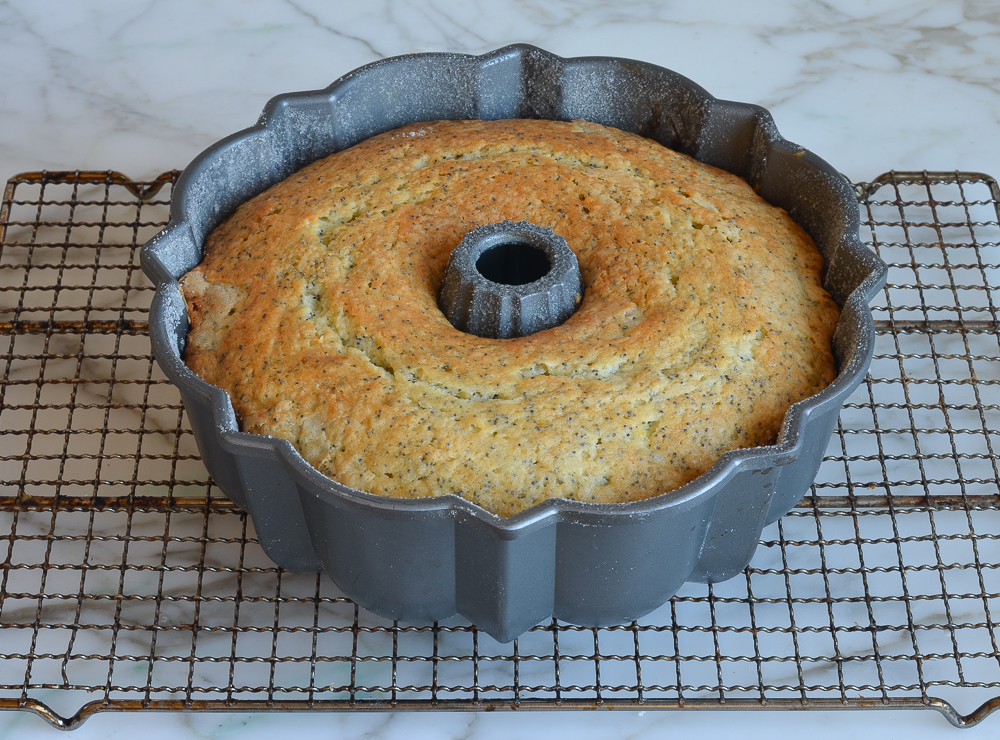
Cool the cake in the pan for ten minutes on a rack. While the cake cools, make the syrup. Combine the water and granulated sugar in a saucepan and bring to a boil. Remove from the heat and stir in the lemon juice.
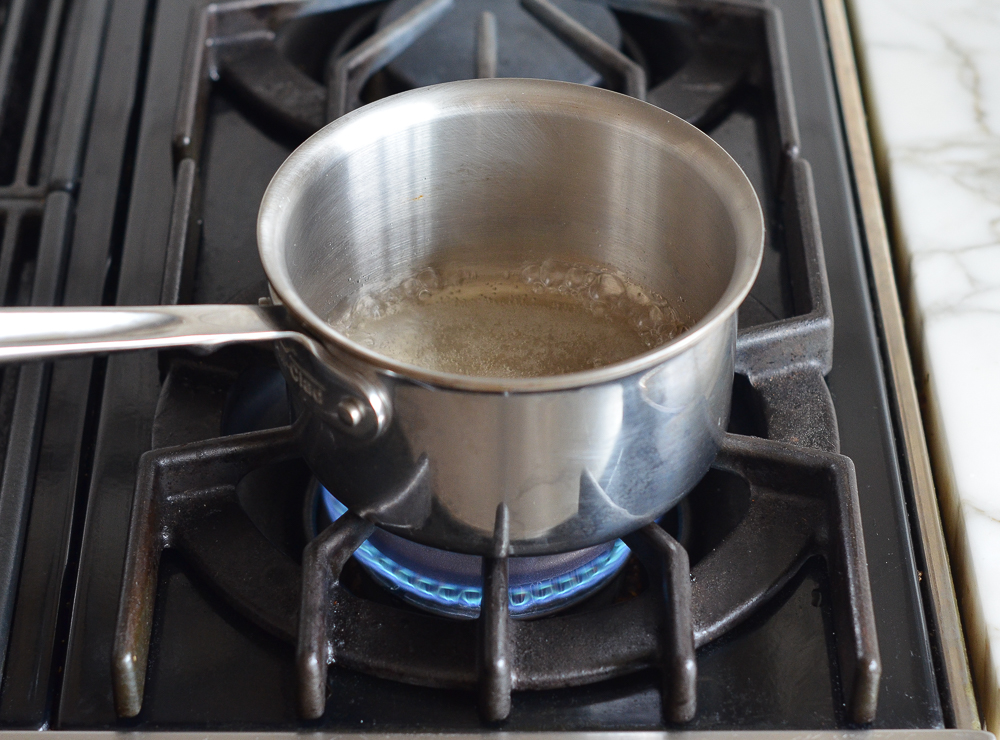
Invert the warm cake onto the rack. Slip a large piece of parchment paper or aluminum foil under the rack to catch all the drips from the syrup. Gradually brush the hot syrup over the cake, letting it soak in (a little syrup will drip off, but try not to rush so that most of it is absorbed). Allow the cake to cool completely, about one hour.
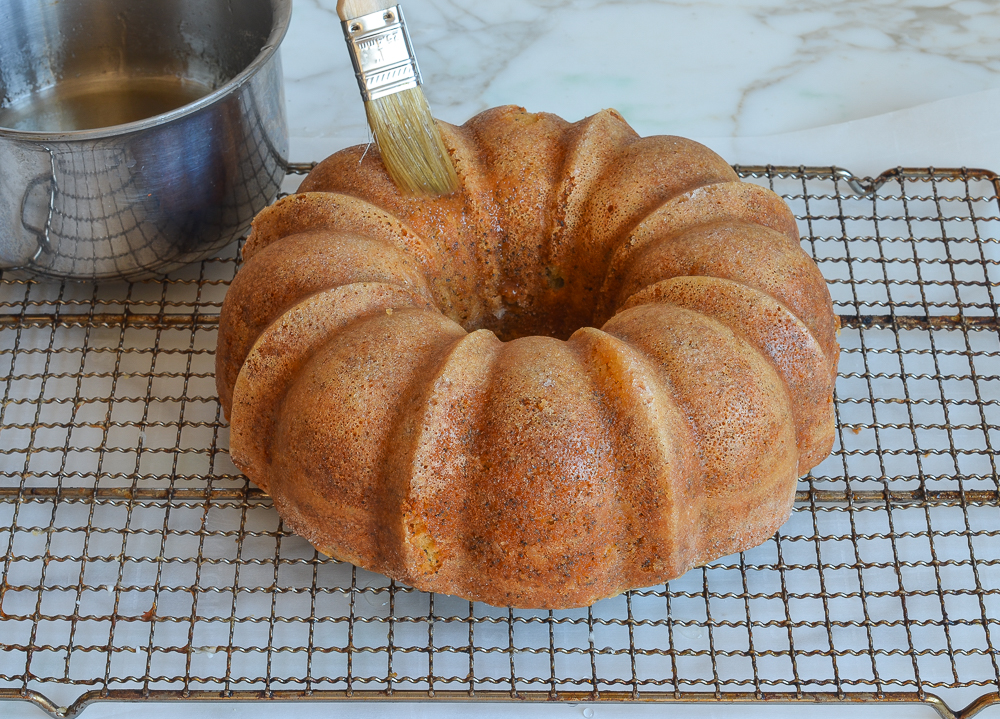
When the cake is cool, make the glaze. Stir the confectioners’ sugar and lemon juice in a small bowl, mixing until completely smooth. Add more confectioners’ sugar if necessary to make a thick, opaque glaze (it should be thicker than you’d think — you want it the consistency of honey or molasses).
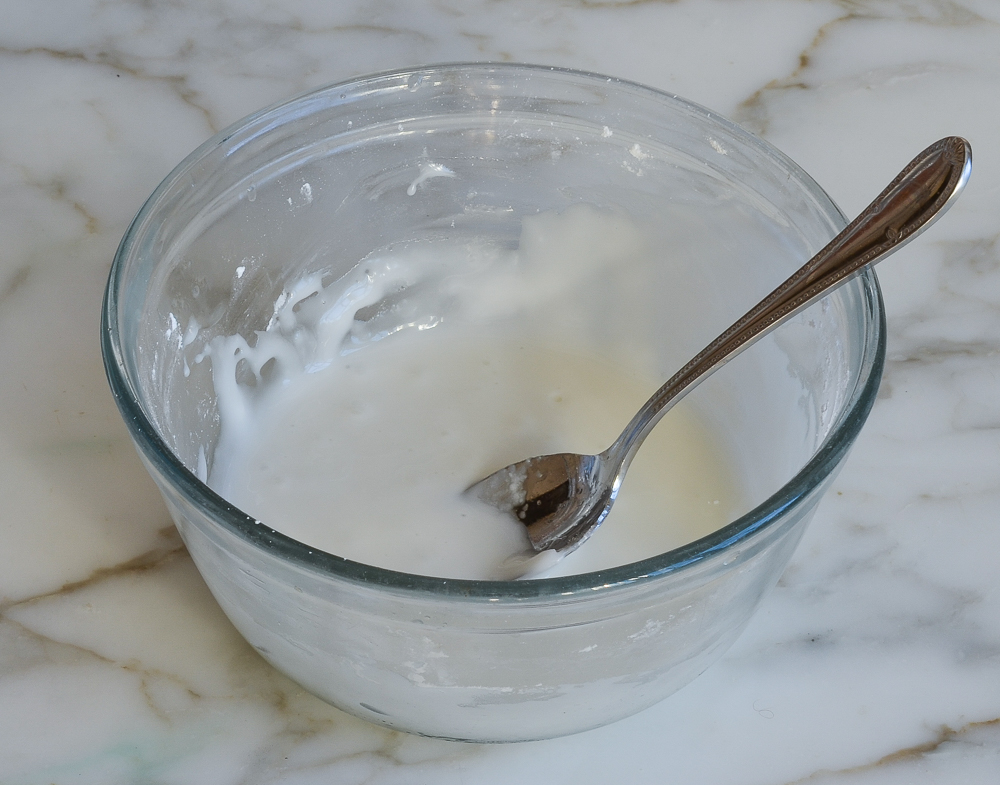
Carefully transfer the cake to a serving platter. Drizzle the glaze over the top of the cake, letting it drip down the sides.
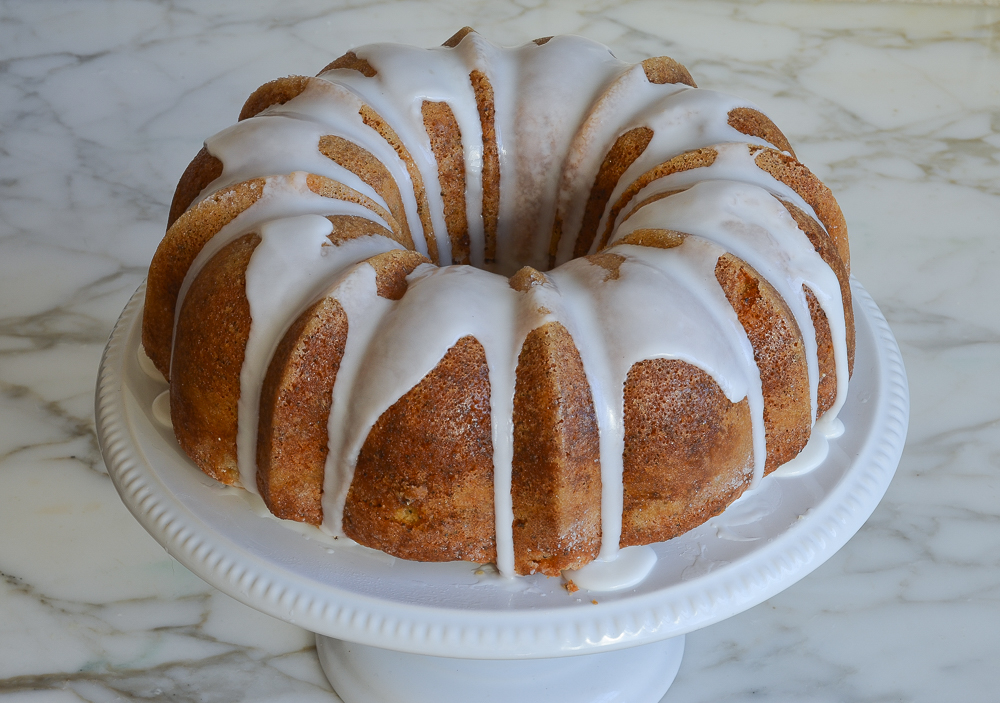
How to Store and Freeze Lemon Poppy Seed Cake
Let the glaze harden before slicing. The cake will keep nicely for 3 days if kept covered on the countertop. It can also be frozen (without the glaze) for up to 3 months. After it is completely cooled, double-wrap it securely with aluminum foil or plastic freezer wrap, or place it in heavy-duty freezer bag. Thaw overnight on the countertop before serving. (Add the glaze after the cake is thawed.)
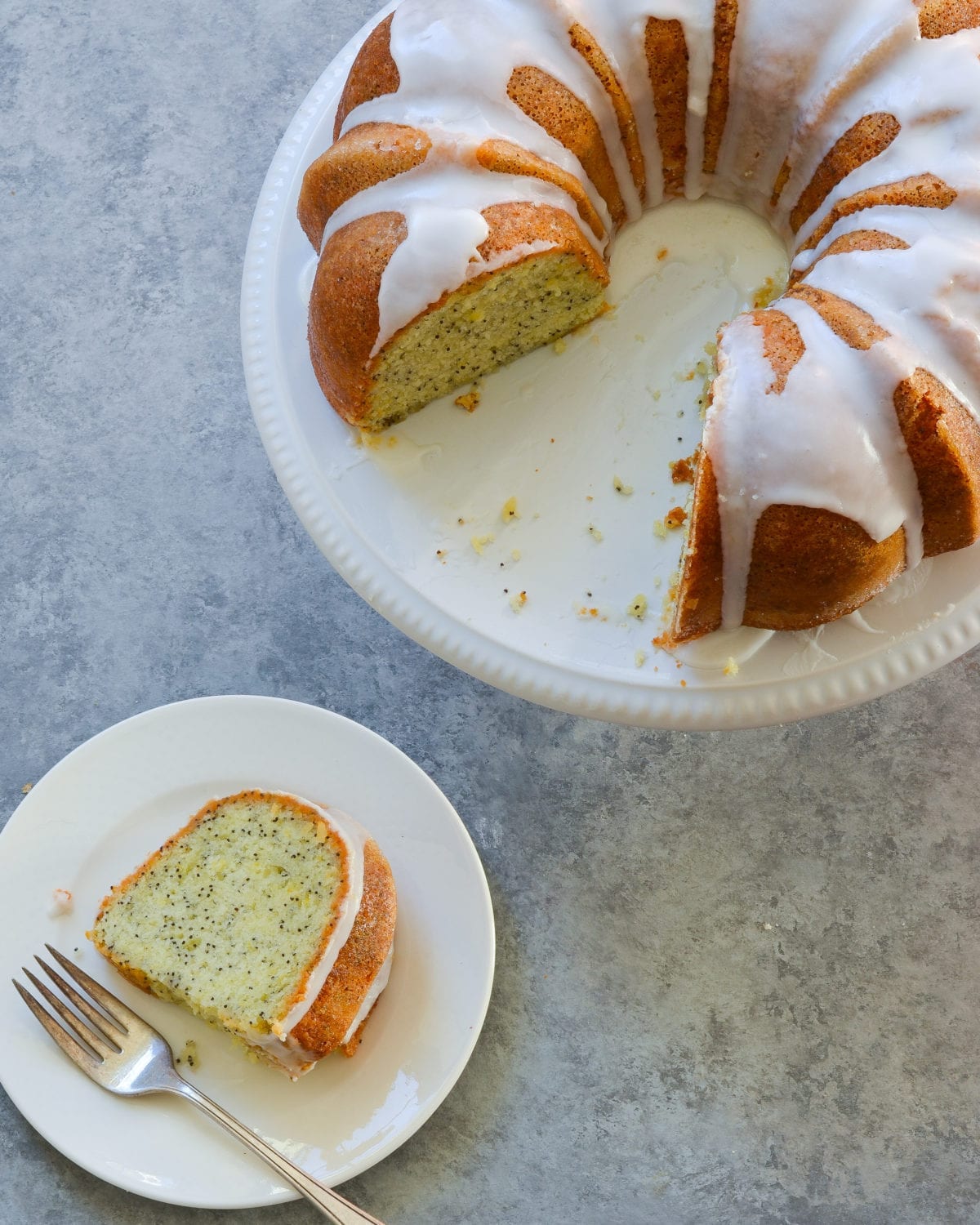
You may also like
- Warm Lemon Pudding Cakes
- Lemon Blueberry Pound Cake
- Fresh Strawberry Cake
- Easy Lemon Meringue Pie
- French Apple Cake
Lemon Poppy Seed Cake
This lemon poppy seed cake is laced with fresh lemon zest, filled to the brim with nutty, crackly poppy seeds, and drizzled with a bright lemon glaze. It’s the perfect “company cake.”
Ingredients
For the Cake
- 3 cups all-purpose flour, spooned into measuring cup and leveled-off with a knife
- ½ teaspoon baking soda
- ½ teaspoon salt
- ¼ cup poppy seeds
- 1 cup low-fat buttermilk (see note)
- Finely grated zest of 3 lemons (about 3 gently packed tablespoons)
- 2 tablespoons fresh lemon juice
- 2 sticks (1 cup) unsalted butter, softened
- 2¼ cups granulated sugar, plus more for the pan
- 3 large eggs
For the Syrup
- ¼ cup water
- ¼ cup granulated sugar
- 1½ tablespoons fresh lemon juice
For the Glaze
- About 1 cup confectioners' sugar
- 2 tablespoons fresh lemon juice
Instructions
- Preheat the oven to 325°F and set an oven rack in the middle position. Spray a 10-inch Bundt pan with non-stick cooking spray and dust with sugar. Be sure the entire pan is coated (see note below).
- In a medium bowl, whisk together the flour, baking soda, salt, and poppy seeds. Set aside.
- In a small bowl, combine the buttermilk, lemon zest and lemon juice. Set aside.
- In the bowl of an electric mixer fitted with the paddle attachment (or beaters), cream the butter and sugar on medium speed until light and fluffy, 3-4 minutes. Scrape down the sides of the bowl, then beat in the eggs one at a time, beating well after each addition. Scrape down the sides of the bowl again. With the mixer on low speed, beat in one-quarter of the flour mixture, then one-third of the buttermilk mixture. Beat in another quarter of the flour mixture, then another third of the milk mixture. Repeat with another quarter of the flour mixture and the remaining milk mixture. Finally, beat in the remaining flour mixture. Scrape down the sides and bottom of the bowl, and give a quick mix with a rubber spatula to make sure all of the ingredients are well incorporated.
- Spoon the thick batter into the prepared pan and smooth the top with a rubber spatula. Bake for 65 to 75 minutes, or until the top of the cake is golden and a cake tester comes out clean. Cool the cake in the pan for ten minutes on a rack.
- While the cake cools, make the syrup. Combine the water and granulated sugar in a saucepan and bring to a boil. Remove from the heat and stir in the lemon juice.
- Invert the warm cake onto the rack. Slip a large piece of parchment paper or aluminum foil under the rack to catch all the drips from the syrup. Gradually brush the hot syrup over the cake, letting it soak in (a little syrup will drip off, but try not to rush so that most of it is absorbed). Allow the cake to cool completely, about one hour. When the cake is cool, carefully transfer it to a serving platter.
- To make the glaze: stir the confectioners' sugar and lemon juice in a small bowl, mixing until completely smooth. Add more confectioners' sugar if necessary to make a thick, opaque glaze (it should be thicker than you'd think -- you want it the consistency of honey or molasses). Drizzle the glaze over the top of the cake, letting it drip down the sides. Let the glaze harden before slicing and serving the cake, about 15 minutes. The cake will keep nicely for 3 days if kept covered on the countertop.
- Note: If you’d like to make your own buttermilk, check out the easy method here.
- Note: You'll need 3 large lemons for this recipe
- Note: As the recipe indicates, I grease the Bundt pan with nonstick cooking spray and then dust it with sugar. It has always worked beautifully for me, but a number of readers have mentioned problems with the cake sticking. If you’d prefer to use a different method, treat the pan by generously coating it with butter and then dusting it with flour, or use a nonstick baking spray with flour like Pam with Flour or Baker’s Joy. (Also, it's best not to use a Bundt pan with an intricate design for this cake, as they are more prone to sticking.) Another option (that is foolproof) is to use two 8½ x 4½-inch loaf pans instead of a Bundt pan. Loaf pans are much less prone to sticking, and you can line them with parchment paper for extra insurance. To prepare the loaf pans, spray them with nonstick baking spray, line the bottoms with parchment, and then spray them again. The bake time will be 50 to 60 minutes, and you will only need half of the soaking syrup.
- Freezer-Friendly Instructions: The cake can be frozen (without the glaze) for up to 3 months. After it is completely cooled, double-wrap it securely with aluminum foil or plastic freezer wrap, or place it in heavy-duty freezer bag. Thaw overnight on the countertop before serving. (Add the glaze after the cake is thawed.)
Nutrition Information
Powered by ![]()
- Per serving (16 servings)
- Calories: 369
- Fat: 14 g
- Saturated fat: 8 g
- Carbohydrates: 59 g
- Sugar: 40 g
- Fiber: 1 g
- Protein: 5 g
- Sodium: 158 mg
- Cholesterol: 66 mg
This website is written and produced for informational purposes only. I am not a certified nutritionist and the nutritional data on this site has not been evaluated or approved by a nutritionist or the Food and Drug Administration. Nutritional information is offered as a courtesy and should not be construed as a guarantee. The data is calculated through an online nutritional calculator, Edamam.com. Although I do my best to provide accurate nutritional information, these figures should be considered estimates only. Varying factors such as product types or brands purchased, natural fluctuations in fresh produce, and the way ingredients are processed change the effective nutritional information in any given recipe. Furthermore, different online calculators provide different results depending on their own nutrition fact sources and algorithms. To obtain the most accurate nutritional information in a given recipe, you should calculate the nutritional information with the actual ingredients used in your recipe, using your preferred nutrition calculator.

Is it ok to use regular milk instead of buttermilk? Also how about dry milk powder as a substitution for milk? I have both dry milk and buttermilk in the pantry and don’t really want to go and buy a quart of either because we won’t use it.
Thanks,
Mary
Hi Mary, You really need buttermilk for this, but you can make your own buttermilk if you have milk and either lemon juice or white vinegar. See how here. Hope that helps!
I made this today. Excellent… love the light sweetness. No glaze or drizzle for me and the cake wasn’t too sweet. 🙂
Baked these this past weekend, and by these I mean I went the route of using 2 loaf pans vs the bunt pan, and they turned out perfectly. They still have enough lemon flavor to them if you want to omit the glaze, but they’re fabulous once the glaze is added. Enjoy!
I made this cake today, and it looks just like the picture! More importantly, it tastes great and has a nice texture. I put it in a Bundt pan, and had no problem with sticking. I used a combination of cooking spray and crisco to make sure all the crevices were well-greased, and then floured it.
This was divine! I made it exactly as directed. It was straight-forward and delicious.
I absolutely love this cake! My husband, who is not a huge lemon dessert fan, is devouring as I type! I also had problems with the cake sticking, but just a bit on one side. The syrup is such a great idea! I’ve had pound cake with syrup, and cake with glaze, but the combo on both! Wow!
Hi,
Just made the recipe in two pound cake pans. Turned out beautiful. I made the buttermilk as your recipe because it was hard to find here in Puerto Rico. I buttered the pans generously and after sprinkled with sugar put them in the refrigerator while preparing the cakes, and the cakes came right out of the pans easily once cooled.
After tasting the batter, I found it very delicious but quite sweet and decided to use limes instead of lemons for both the syrup and the glaze, the final result was lemony, sweet and crisp.
I did used the whole recipe of the syrup since I was going to freeze one of the cakes and for that one I added the extra syrup, wishing it would help keep it moist once the cake is defrosted.
Thanks so much and the best for this new year.
I don’t leave reviews but this is, hands down, the best cake that I have ever made (and I enter competitions). Absolutely fantastic. I love the natural lemon flavor and the fact that it doesn’t need to “hide” behind a rich frosting. I even made/served it without. Thank you, thank you, thank you.
Also, to make sure that the cake comes out of the pan, every single centimeter of the pan needs to be coated with spray/sugar. And the resting period, where the cake will naturally contract (pull away from the pan), has to be honored. But, the sugar caramelizes and, in my spouse’s words, “the crust makes the cake.”
A lemony delight! I’ve made this cake twice and both times the cake didn’t stuck to my Bundt. I do believe the quality of the bundt pan and the oven baking temperature plays a big role. My Nordicware bundt holds the heat well, and gives that outer crust that’s not only delicious but ensures the cake does not stick. Absolutely delicious and a crowd pleaser.
Two stars. Tastes pretty good, but half of the cake stuck to the pan. I’ve made bundt cakes forever, never had this problem? Left with crumbly pieces, not worth bothering with syrup and glaze. See that quite a few others had this problem.
I received extra lemons in my deliver-to-home food box, so went looking for a way to use them. I vaguely remember making lemon pound cake many years ago. (I don’t bake much anymore as my children are all grown and out of the house.) Because I’m so out of practice, I really appreciated the clear, step-by-step instructions. I used loaf pans so I could freeze one, as it’s a lot of cake for two people. However, it’s so delicious I’ll probably eat it up rapidly. I tried to give it five stars, but couldn’t get that function to work.